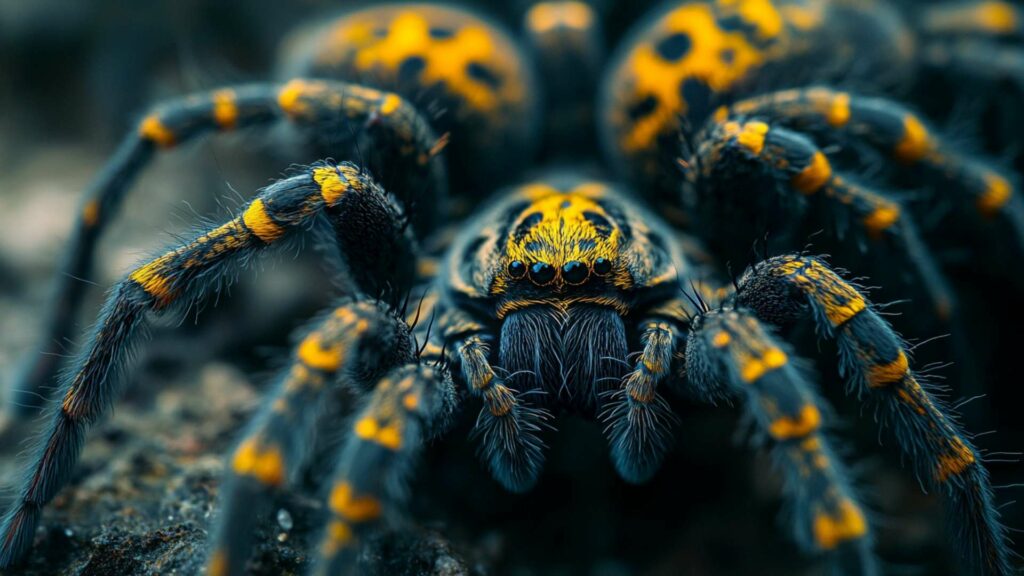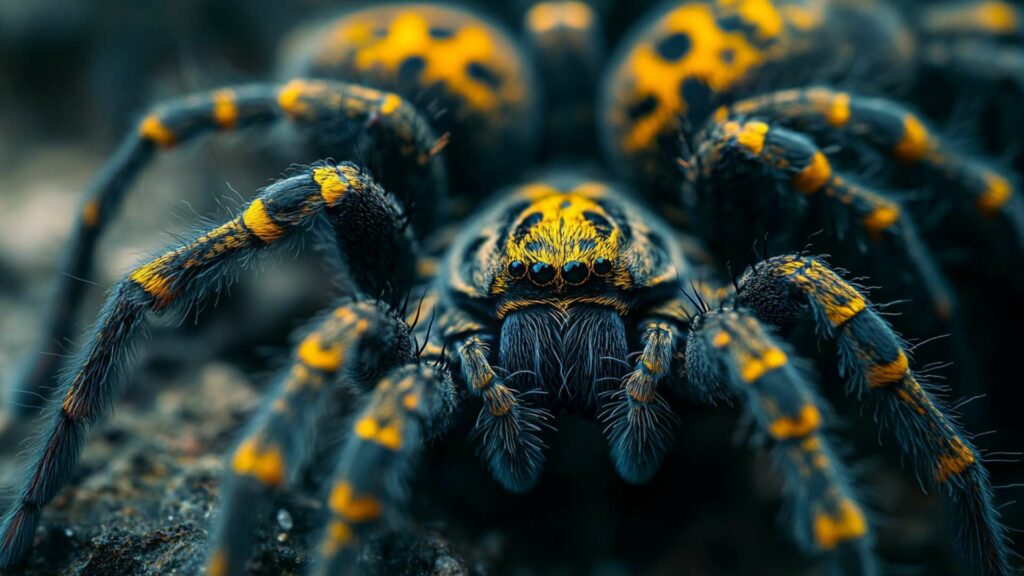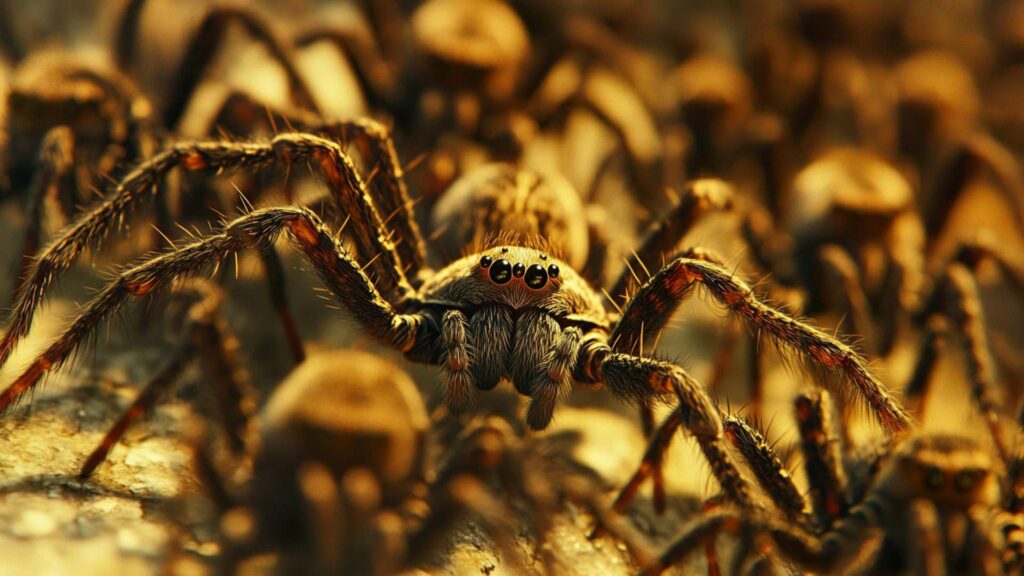Unraveling the Intricacies of Arachnids
Spiders, those eight-legged marvels, have long captured the collective human imagination. From their intricate webs to their delicate movements, they have intrigued both arachnophiles and arachnophobes alike.
There is something undeniably captivating about these creatures preventing spiders that walk the line between beauty and fear. Whether it’s the garden spiders elegantly spinning their silk tapestries or the elusive wolf spiders carrying their young spiderlings on their backs, spiders have become an object of fascination and curiosity for many.
One aspect that fuels our intrigue in baby spiders is the mysterious life cycle of these remarkable creatures. Unlike humans and other species, spiders exhibit a vastly different pattern when it comes to reproduction.
Instead of giving birth to live young ones, many species of spiders lay eggs – lots of them! This unique method raises a plethora of questions: Do spiders die after laying eggs?
How does egg-laying impact their lifespan? To understand these questions fully, we delve into the complex world of spider reproduction.
A Window into Spider Parenthood

When it comes to life cycles in nature, few are as perplexing as that of spiders. These arthropods follow a fascinating reproductive journey that spans from mating to egg-laying and eventually hatching.
Understanding this cycle not only satisfies our curiosity about many spiderlings but also offers insight into the incredible adaptations that have allowed many spider species to thrive over millions of years. The process begins with male and female spiders venturing out in search of mates.
Once they find each other, courtship rituals unfold in an array of mesmerizing displays – from intricate dances performed by peacock spiders to gift-giving behaviors exhibited by some orb-weaving species. After successful mating, female spiders embark on the egg-laying process, which is characterized by various behaviors and strategies depending on the species.
Web-building spiders, for instance, construct specialized silk structures called egg sacs to protect their precious cargo. These spider egg sacs are meticulously woven and can contain hundreds of spider eggs.
Other species, like wolf spiders, carry their eggs along with them until they hatch, providing warmth and safety. The anticipation of new life within these egg sacs adds another layer of fascination to the curious minds pondering the intricacies of spider parenthood.
The Wonder Continues…
Spiders’ life cycles continue to captivate us as we unravel more about their reproductive processes. In subsequent sections of this article, we dive deeper into questions surrounding spider lifespan after laying eggs – a topic that brings insight into the sacrifices made by female spiders in ensuring the survival of their offspring. We will also explore exceptions to the general rule and discover that not all spiders meet their demise after reproducing.
So join us as we embark on this enthralling journey through spider reproduction. Prepare to be amazed by these arachnids’ resilience and resourcefulness as they navigate the challenges posed by nature while ensuring the continuation of their lineage.
The intricate dance of male and female spiders

When it comes to spider reproduction, the story begins with the meeting of male and female spiders. In most spider species, it is the males who actively seek out potential mates.
They employ various strategies to attract females, such as elaborate courtship rituals or offering gifts of prey wrapped in silk. These antics are not just for show; they serve a vital purpose in convincing the other females that they are worthy partners.
Once a female spider has been successfully wooed, mating can begin. The process typically involves the male transferring sperm to the female using specialized structures called pedipalps.
These pedipalps function similarly to human reproductive organs and are located near the front legs of many females and male spiders. They transfer sperm packets into the female’s reproductive organs, ensuring fertilization of her eggs.
Mating process: A risky endeavor
The mating process can be quite perilous for male spiders, as some females tend to exhibit aggressive behavior towards their suitors. In certain spider species, males risk becoming dinner after fulfilling their reproductive duties! However, these brave males still take their chances because passing on their genes is paramount for future generations.
In some cases, males may even sacrifice themselves during copulation itself. This self-sacrifice ensures that they have effectively transferred enough sperm to increase their chances of paternity while potentially reducing rival males’ opportunities.
It’s an extreme act driven by fierce competition within spider communities. Whether it’s through flamboyant courtship displays or acts of selflessness during mating, these encounters play a crucial role in perpetuating spider populations across diverse habitats worldwide.
Understanding these basics helps us appreciate the intricacies involved in their reproduction and gain insights into why certain behaviors have evolved over time. Note: HTML tags have been used in this example for formatting purposes only; they would not be included in the actual article.
Web-building for Egg Sacs: Weaving Life’s Cradle

When it comes to the egg-laying process, female spiders exhibit remarkable creativity and resourcefulness. Before giving birth to their bundles of joy, these eight-legged architects embark on a mission to build intricate homes called egg sacs.
These sacs serve as protective cradles for spider eggs until they hatch into spiderlings. The web-building process is both an art and a science, varying across different spider species.
Some spiders, like the industrious wolf spider, construct burrows in the ground or hidden crevices to safeguard their precious cargo. They dig deep tunnels and create silk-lined chambers within which they carefully place their eggs.
This ensures that the developing spiderlings are shielded from predators and harsh environmental conditions. Conversely, other species of spiders opt for web-building techniques high above the ground.
These skilled weavers spin delicate yet resilient webs that accommodate several egg sacs at once. These orb-weaving spiders meticulously position each egg sac well within the intricate patterns of their silk masterpiece, providing camouflage against predators while allowing air circulation for optimal incubation.
Protection of Eggs: Maternal Devotion Unleashed

Once female spiders have created their egg sacs with finesse and precision, they unleash their maternal instincts in full force—protecting their unborn offspring becomes paramount. Female spiders go to great lengths to ensure the survival of future generations, even risking their own lives in the process.
To safeguard their eggs from any potential harm or danger lurking nearby, female spiders display exceptional vigilance and defensive behavior. Some species build additional layers of silk around the egg sacs as an extra line of defense—creating a fortress-like structure that discourages curious intruders.
Motherly dedication doesn’t end there; many female spiders remain steadfast guardians throughout the incubation period, remaining by the sacs and fending off any potential threats. They may even sacrifice their own nutritional needs to eat and conserve energy, ensuring that their young spiderlings have the best chances of survival when they finally emerge from their silken hideaways.
The levels of dedication and protection exhibited by female spiders towards their eggs are truly awe-inspiring. From constructing intricate egg sacs to actively defending them against predators, these amazing creatures demonstrate a remarkable commitment to preserving their offspring’s chances of survival.
General Spider Lifespan Variations
Spider lifespan varies greatly depending on the species. Some spider species have short lifespans, while others can live for several years. For example, jumping spiders typically have a relatively short life expectancy of around one year, whereas tarantulas can live up to 20 years or more in some cases.
The size of the spider also influences its lifespan, with smaller species generally having shorter lifespans compared to larger ones. When it comes to female spiders, their lifespan after laying eggs can be influenced by various factors.
Some females die shortly after laying eggs due to the physical toll it takes on their bodies. However, this is not always the case as there are exceptions where females survive and continue living for a period even a few weeks after reproducing.
Impact of Egg-Laying on Spider’s Health and Longevity
Egg-laying is a significant process that requires an immense amount of energy and resources from female spiders. The production of several egg sacs filled with dozens or even hundreds of eggs demands a tremendous investment in terms of time and nutrition. The spider must ensure that these fragile sacs are protected from predators, insects, and environmental threats, which further drains its energy reserves.
The act of laying eggs itself can be physically demanding for female spiders and may lead to a decline in their overall health. Producing silk threads to construct elaborate webs or protective egg sacs requires considerable effort and resources.
Additionally, some females may stop feeding during the egg-laying period, further depleting their reserves and weakening their immune systems. It is important to note that while egg-laying can have a taxing effect on female spiders’ health and longevity, this does not apply universally across all spider species.
There are instances where females manage to survive beyond the reproductive phase without significant decline in their health. These exceptions, however, tend to be relatively or extremely rare and depend on various factors such as species-specific characteristics and environmental conditions.
Female spider’s dedication to guarding eggs
After a female spider lays her precious eggs, she enters a phase of intense dedication to ensure the survival of her offspring. This involves an admirable display of maternal instincts that can sometimes involve sacrificing her personal well-being. Instead of simply abandoning the eggs and moving on with her life, the female spider becomes entirely focused on guarding and protecting them.
Sacrificing personal well-being for offspring survival
The commitment that female spiders show towards safeguarding their eggs is truly remarkable. They invest significant amounts of time and energy in keeping predators at bay and maintaining optimal conditions for the developing spiderlings.
During this period, they often refrain from hunting or feeding themselves, as their primary goal becomes ensuring the survival of their offspring. This selflessness can have detrimental effects on their own well-being, as they may become weakened due to prolonged periods without food.
Examples of maternal instincts in different spider species
Different species of spiders exhibit diverse behaviors when it comes to post-egg-laying care. Some species build elaborate silk structures around their egg sacs for protection, while others carry the sacs with them wherever they go.
For instance, wolf spiders carry their precious bundles on their backs until the spiderlings hatch, providing them with constant warmth and protection. Other species may spin webs around the egg sacs as an additional layer of defense against potential threats.
These examples showcase the incredible variety in maternal instincts among different species of spiders. While some females may dedicate only a few days to guard their eggs until they hatch, others invest several weeks or even months in this vital task.
It is fascinating to observe how these small arachnids exhibit such complex behaviors to ensure the survival and success of their future generations. (Note: The article will continue with sections VI and VII in the next part.)
Natural Causes Leading to Death
When it comes to the fascinating yet ephemeral lives of spiders, death becomes an inevitable part of their life cycle. After the arduous task of laying eggs, many female spiders succumb to natural causes. One major factor contributing for most spiders to their demise is exhaustion from reproductive efforts.
The process of mating and giving birth is energetically demanding, often leaving the mother depleted and weakened. These remarkable creatures invest substantial time and energy into ensuring the survival of their offspring, sacrificing their own well-being in the process.
Weakening due to Energy Depletion from Egg Production
As female spiders lay eggs, they channel a significant amount of energy into producing and nourishing them. This prolonged period of egg production can take a toll on their physical health, leading to a gradual weakening of their overall condition.
With each egg being meticulously crafted within intricate silk threads that form protective egg sacs, the mother spider exhausts many eggs her resources in this intimate process. As a result, her immune system might weaken over time, making her more vulnerable to diseases or other external threats.
Some Spiders Survive after Laying Eggs

While it may seem that spider death post-egg laying is an unavoidable fate for most females, there are exceptions that defy this general rule. Certain species boast extended lifespans beyond typical expectations. Factors such as genetics and environmental conditions play a crucial role in determining post-egg-laying survival rates for most species.
Some spiders possess inherent traits that enhance their ability to endure beyond this critical phase in their life cycle.
1: Species with Extended Lifespans: Garden spiders (Araneus diadematus) demonstrate remarkable resilience as they continue living for several months after laying eggs. These long-living creatures can often be spotted in gardens, their intricately woven webs acting as a haven for prey. Wolf spiderlings, offspring of the wolf spider family (Lycosidae), also exhibit extended lifespans compared to other spiders.
2: Factors Influencing Post-Egg-Laying Survival: The presence of abundant food sources and favorable environmental conditions significantly contribute to the survival of spiders after they lay eggs. Adequate nutrition enables females to recover from reproductive efforts and maintain their health, enhancing their ability to navigate potential threats and continue thriving.
Conclusion
Appreciating the complexity of spider life cycles reveals the profound sacrifices made by female spiders. Even though many spiders die after laying eggs due to exhaustion and energy depletion, some species defy this fate through extended lifespans and favorable circumstances. Their dedication to ensuring the survival of future generations is awe-inspiring.
Let us marvel at their resilience and acknowledge the significance of every fleeting moment in these intricate life cycles. Through their selfless acts, female spiders remind us that life’s journey is not solely about individual existence but about leaving a lasting impact on future generations.
Defeat Spiders with D-Termination: Las Vegas’ Top Pest Control Choice!

If spiders are a concern in your Las Vegas property, fret no more! D-Termination provides the ultimate solution. Our skilled team specializes in eliminating spider infestations, bringing back peace and tranquility to your space. Say farewell to spiders—opt for D-Termination’s effective pest control services today!
Reach out to us at 702-919-6310 or visit dtermination.com to schedule your spider control service and reclaim your space from these unwelcome pests.
Frequently Asked Questions:
It depends on the spider species. Some die after laying eggs, while others may not.
The act of laying eggs can be physically demanding for some spiders, leading to their death.
After laying her eggs, the female spider may guard the egg sac or continue with her usual activities, depending on the species.
In some cases, yes, female black widow spiders may die after laying eggs.








